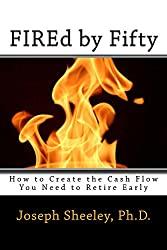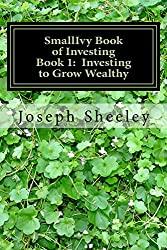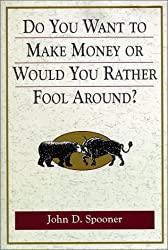
The very essence of an investment in a stock is the dividend. A dividend is a payment of a portion of the profits from a company out to shareholders. For each share of shock you own you get a payment, ranging from a few cents to a few dollars. It is the payment of dividends from which an investor gets repaid for his investment. That’s the reason for providing your money for others to use in the first place.
(Note, this site contains affiliate links. As an Amazon Associate I earn from qualifying purchases. When you click on an affiliate link and buy something, The Small Investor will get a small commission for the referral. You are charged nothing extra for the purchase. This helps keep The Small Investor going and free. I don’t recommend any products I do not fully support. If you would like to help but don’t see anything you need, feel free to visit Amazon through this link and buy whatever you wish. The Small Investor will get a small commission when you do, again at no cost to you.)
Even if a stock does not pay a dividend when you buy it, it only has worth because of the possibility of a dividend being paid in the future. When as company is young and growing, it needs all of the money it can get to buy more locations, perform research and development, expand product lines, and acquire other companies. It isn’t uncommon for companies to not pay any dividends at all for the first ten or even twenty years of their existence. Once they reach enough size, however, where they are making more money than they can productively reinvest, they will start sending the excess profits out to shareholders. It is at that point where the shareholders who bought into the company when it was small and needing cash start to get their reward.
Dividends are typically paid out four times per year. If you are a registered shareholder when the dividend is declared, called the ex-dividend date, you will either receive a check in the mail about a month later or have the money deposited into your brokerage account. If you buy the stock after the ex-dividend date, the person you bought the stock from will receive the dividend. But not to worry, since the price of a stock often drops on the ex-dividend date to account for the loss of the dividend. Note that most dividends are only a few percent of the share price, so you’ll hardly notice the difference in share price when compared to the random fluctuations in price that occur each day.

Before you can start investing, you need money to invest. Please check out my latest book, FIREd by Fifty: How to Create the Cash Flow You Need to Retire Early
How are dividends set?
Dividends are set by the board of directors for a company. The percentage of share price that a company pays out as a dividend is called its yield. Most companies set their dividend rate for the next year at the end of the current year. It is therefore common for a company to increase its payout with the first dividend of the new year. Some companies also declare special dividends in December where they pay out any profit above their projections to shareholder. For example, if they expected to make a dollar per share for the year and therefore declare a $0.25 dividend per share each quarter, but then end up making $1.10 per share, they may pay out $0.25 during the first three quarters and then pay out $0.35 in December, including the standard $0.25 dividend plus a special $0.10 dividend.
Dividend rates, or yields, tend to be a lot higher than you can get from a bank in a savings account or CD, but lower than you can get from bonds. For example, if bonds are paying 5%, a good dividend yield from a stock might be 3%. Many stocks will pay less than this, perhaps 1% or 0.5%. Others still may not be paying any dividend at all. But the reason for this is that the stocks yielding less are probably growing and reinvesting more of their profits, so they may pay more out in the future. The stock paying 3% may be a big company that is generating all sorts of money they can’t really use, so they are paying it out to shareholders.
On average, you’ll often make a greater profit over a long period of time (say, 10 years) investing in a portfolio of the stocks paying the lower dividends than you will investing in a portfolio of those paying the higher dividends because the former are growing faster than the latter, but the higher paying stocks are also more of a sure bet. To say this another way, you’re more likely to make 7% per year average investing in a stock paying a 3% dividend than you are to make 10% on one paying a 1% dividend. You’re also in for a wilder ride with the growing, low yield stocks.

This is my first book, which covers all of the details of how to invest and the risks involved in investing in different types of securities. This is the information you need to know before buying individual stocks or even mutual funds. Even more than that, it tells you what you should be doing at each stage of life to come out financially independent before you retire. Click on the book image above to learn more about it and read an exert on Amazon.
It is not always the case that a low yielding stock is growing. Sometimes a company will not be paying a dividend because they are not making a profit and will eventually run out of money and close down unless things turn around. They are just buying their time and hoping. At least if a company is paying a dividend, they’re doing well enough to pay a dividend. Dividend-paying stocks therefore are seen as being of higher quality than those that don’t. Investors often flock to high-yield stocks when the markets get rocky since these are seen as safer investments.
In addition, as long as the amount the company is paying out does not decrease, the yield will increase as the share price falls. For example, if stock XYZ were paying out $1.00 per share per year when the stock price is at $50 per share, that is a yield of 2%. If the price of XYZ drops to $25 per share but they keep paying $1.00 per share per year, that is a yield of 4%. Investors who may not have been willing to buy XYZ when it was only paying 2% may now rush in and buy at $25 per share since they can now get a yield of 4%. This helps keep the price from falling as far as it might if it were not paying a dividend. People come in and buy as the yield increases.
Companies are leery of cutting their dividends. They like to pay a higher dividend each year since that encourages shareholders to buy in and keep bidding up their share price. If they cut their dividend, the share price will often fall. A good portion of executive pay is often paid out in options, which become more valuable as share price goes up, so directors want to keep the share price going up, not down. Some directors are even paid more if the share price stays above a certain level.

Learn to be a better investor by reading J.D. Spooner’s Do You Want to Make Money or Would You Rather Fool Around? This book made me realize that I wasn’t buying enough shares in the companies I was investing in, meaning my wins were no where near as big as they should have been.
Why not just buy bonds for the higher returns
So, if I can buy a bond and get 5%, why would I buy a stock and get 1%? Because a bond will mature at some point and pay me my investment back, assuming that the company does not go out-of-business over that time period, why take the risk with a stock that goes up and down in price and only pays 1%? The answer is that the interest paid by a bond is fixed, but the dividend paid by a stock can grow.
As an example, let’s look at the historical dividend yields for Home Depot from streetinsider:
Ex-Div. DateAmountTypeYieldChangeDecl. DateRec. DatePay. DateDetails
9/2/2020$1.50Quarter2.1%N/A8/18/20209/3/20209/17/2020Details
6/3/2020$1.50Quarter2.4%N/A5/19/20206/4/20206/18/2020Details
3/11/2020$1.50Quarter2.8%+10.3%2/25/20203/12/20203/26/2020Details
9/4/2019$1.36Quarter2.4%N/A8/22/20199/5/20199/19/2019Details
6/5/2019$1.36Quarter2.8%N/A5/23/20196/6/20196/20/2019Details
3/13/2019$1.36Quarter3%+32%2/26/20193/14/20193/28/2019Details
11/28/2018$1.03Quarter2.3%N/A11/15/201811/29/201812/13/2018Details
8/29/2018$1.03Quarter2%N/A8/16/20188/30/20189/13/2018Details
5/30/2018$1.03Quarter2.2%N/A5/17/20185/31/20186/14/2018Details
3/7/2018$1.03Quarter2.3%+15.7%2/20/20183/8/20183/22/2018Details
11/29/2017$0.89Quarter2%N/A11/16/201711/30/201712/14/2017Details
8/29/2017$0.89Quarter2.4%N/A8/17/20178/31/20179/14/2017Details
5/30/2017$0.89Quarter2.3%N/A5/18/20176/1/20176/15/2017Details
3/7/2017$0.89Quarter2.4%+29%2/21/20173/9/20173/23/2017Details
11/29/2016$0.69Quarter2.1%N/A11/17/201612/1/201612/15/2016Details
8/30/2016$0.69Quarter2.1%N/A8/18/20169/1/20169/15/2016Details
5/31/2016$0.69Quarter2.1%N/A5/19/20166/2/20166/16/2016Details
3/8/2016$0.69Quarter2.2%+16.9%2/23/20163/10/20163/24/2016Details
12/1/2015$0.59Quarter1.8%N/A11/19/201512/3/201512/17/2015Details
9/1/2015$0.59Quarter2.1%N/A8/20/20159/3/20159/17/2015Details
6/2/2015$0.59Quarter2.1%N/A5/21/20156/4/20156/18/2015Details
3/10/2015$0.59Quarter2.1%+25.5%2/24/20153/12/20153/26/2015Details
12/2/2014$0.47Quarter1.9%N/A11/20/201412/4/201412/18/2014Details
9/2/2014$0.47Quarter2.1%N/A8/21/20149/4/20149/18/2014Details
6/3/2014$0.47Quarter2.3%N/A5/22/20146/5/20146/19/2014Details
3/11/2014$0.47Quarter2.3%+20.5%2/25/20143/13/20143/27/2014Details
12/3/2013$0.39Quarter2%N/A11/21/201312/5/201312/19/2013Details
9/3/2013$0.39Quarter2.1%N/A8/22/20139/5/20139/19/2013Details
6/4/2013$0.39Quarter2%N/A5/23/20136/6/20136/20/2013Details
3/12/2013$0.39Quarter2.2%+34.5%2/26/20133/14/20133/28/2013Details
11/27/2012$0.19Quarter1.2%N/A11/15/201211/29/201212/13/2012Details
8/28/2012$0.29Quarter2.1%N/A8/16/20128/30/20129/13/2012Details
5/29/2012$0.29Quarter2.3%N/A5/17/20125/31/20126/14/2012Details
3/6/2012$0.29Quarter2.5%N/A2/23/20123/8/20123/22/2012Details
11/29/2011$0.29Quarter3.5%+16%11/15/201112/1/201112/15/2011Details
6/14/2011$0.25Quarter2.9%N/A6/1/20116/16/20116/30/2011Details
11/30/-0001$0.25Quarter3.0%N/A8/18/20119/1/20119/15/2011Details
Historical Dividend History of Home Depot, from Streetinsider.comLet’s say you bought 100 shares of Home Depot back in June 2011. If you bought the shares before June 14th, You would have received a dividend of $0.25 per share at the end of June. This means you would have gotten a check for $25. Since the yield was 2.9% at that time, you would have paid about $34.50 per share, which means your total investment would have been about $3450. Getting $25 on an investment of $3450 does not sound very exciting, but wait.
If you held the shares and continued to hold them all the way until present day, you would receive a dividend check for $1.50 per share this coming September 17th. If you own 100 shares, that would be a check for $150. If you get four of those checks per year, that will be $600 per year, for a return of 1.8% return per year from dividends alone. So, over a period of 9 years, your return on your original investment went from $100 per year to about $600 per year. If this trend continued over the next 9 years, you might be receiving $900 per quarter or $3600 per year in the year 2029, for a return of more than 10.9% per year. That’s the beauty of dividends: because dividend payouts grow, if you hold on for a long period of time, you’ll be getting far greater returns paid out in dividends each year than you would investing in bonds and reinvesting the money again each time the bonds mature and send you your investment back. Bond interest payments are relatively fixed. Stock dividends grow and grow. As soon as you put your money in bonds, you’re basically locking in how much you get each year. With stocks, it will increase each year.
Your investment also grows
If you had bought 100 shares of Home Depot back in June of 2011, it would have cost you about $3450 as previously stated. If you were to buy 100 shares of Home Depot today, it would cost you about $280 per share, or $28,500. This means that your $3450 investment has grown in value by more than $24,000, or a gain of about 600%. In dividends alone, you’ve been paid more than your original investment of $3450. so you’ve already been paid back your original investment and everything you earn from this point onward is just “free money.”
It isn’t just happenstance that the share price increased with the dividend yield. As the dividend is increased in real dollar terms, the yield increases. Because the yield increases, people are willing to pay more for the stock, causing the yield to go back down to historical levels. So, if Home Depot raises their dividend by 25%, from $6.00 per year to $7.50 per year, assuming that interest rates stay about the same, the share price will tend to go up 25% as well. So if Home Depot continues to follow the current trend and is paying $36.00 per share per year in dividends in 2029, the share price will probably be about $1700. Your original $3450 investment would then be worth about $170,000. Not bad for an 18-year time period!
Now, a lot of things could happen between now and then. Home Depot could make some mistakes and not grow in profitability as much over the next 9 years as they have during the last 9 years. There was also a long period between about 1998 and 2011 where the share price really didn’t grow at all, so that made it easier to grow over the next period of time. If interest rates go up, dividend yields would also need to go up for investors to purchase the shares since the amount they could get through Bank CDs and bonds would increase. This would mean that share prices would drop. This means that you can’t just look at historical dividend increases and historical share price increases, draw a line, and predict what your investment will be worth in 10 years, 20 years, or 30 years.
Still, if you find stocks that are growing and growing their dividend and buy a few of them, you’ll find that a few will stumble, a few will grow but not grow as fast as they were, and a few will shine. Overall, looking at your whole portfolio, you’ll end up doing really well. You’ll also find, assuming that you have the time to wait through the market turmoil and interest rate changes, that you’ll do better with stocks and collecting dividends than you will buying bonds or keeping your money in a savings account. If you need the money next week or next year, or even five years from now, putting your money in stocks may not pay as well as putting your money in bonds or a bank CD. If you have time to wait, however, stocks with their growing dividends can be the way to go.
Have a burning investing question you’d like answered? Please send to[email protected] or leave in a comment.
Follow on Twitter to get news about new articles. @SmallIvy_SI
Disclaimer: This blog is not meant to give financial planning or tax advice. It gives general information on investment strategy, picking stocks, and generally managing money to build wealth. It is not a solicitation to buy or sell stocks or any security. Financial planning advice should be sought from a certified financial planner, which the author is not. Tax advice should be sought from a CPA. All investments involve risk and the reader as urged to consider risks carefully and seek the advice of experts if needed before investing.
